By Rick VanSickle
That’s one small step for wine, one giant leap for winekind, as consumers will soon find out when the first space wine made with zero gravity yeast grown in the absence of the sun’s radiation is released.
Even better … it’s from Niagara, specifically Vineland Estates on the Twenty Mile Bench.
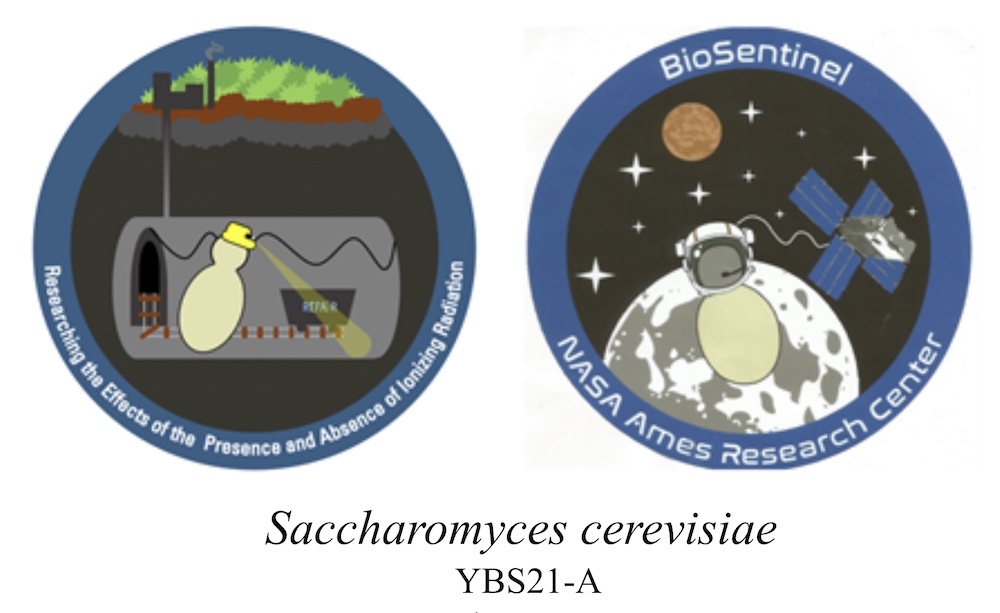
Our story begins three kilometres underground in the SNOLAB, a world-class science facility located in the operational Vale Creighton nickel mine in Sudbury, then to NASA and launched into deep space on a rocket ship, then back to Earth and finally into a 600 L tank wrapped in a space blanket deep in the cellars at Vineland Estates.
Yeast, of course, is the catalyst for converting the sugar in grapes into alcohol during the fermentation process of winemaking, and our story is an otherworldly journey that begins deep underground then jettisoned into space and ultimately into your glass. If I hadn’t tasted the resulting wine for myself, I wouldn’t believe it. I’m going to let winemaker Brian Schmidt tell the story of this space-age project in his own words. It’s a doozy!
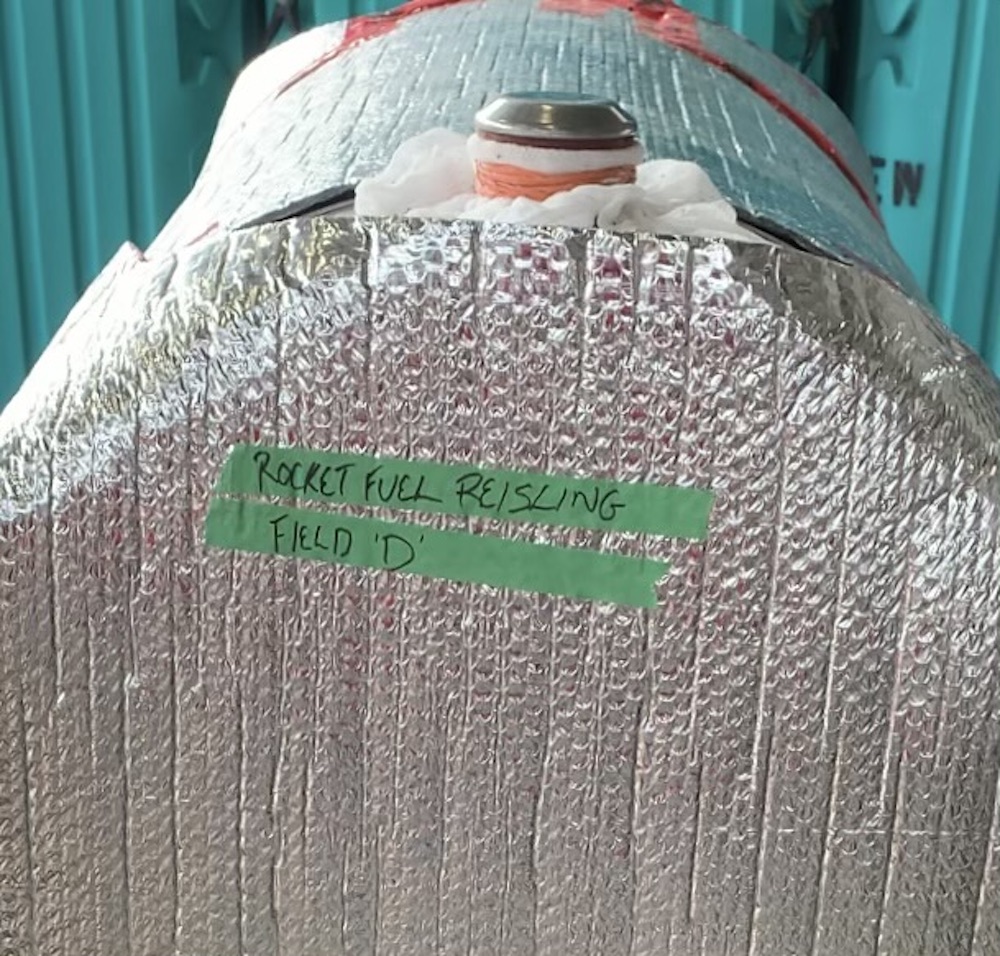
“I was asked by a very smart friend if I would be interested in fermenting a wine with a yeast that had been grown three kilometres underground in the SNOLAB in Sudbury,” he begins. “The yeast (technically known as saccharomyces cerevisiae YBS21-A) was grown as an experiment to determine how yeast will behave when grown in the absence of the sun’s radiation. Of course, I said yes. So, In October the yeast was delivered.
“I only learned at that moment that a portion of the batch of the very same yeast culture had been place in stasis and was sent to NASA, where it was placed in the Artemis rocket, and it was sent into space where researchers would be doing experiments on the health and viability of the yeast while suspended in zero gravity.”
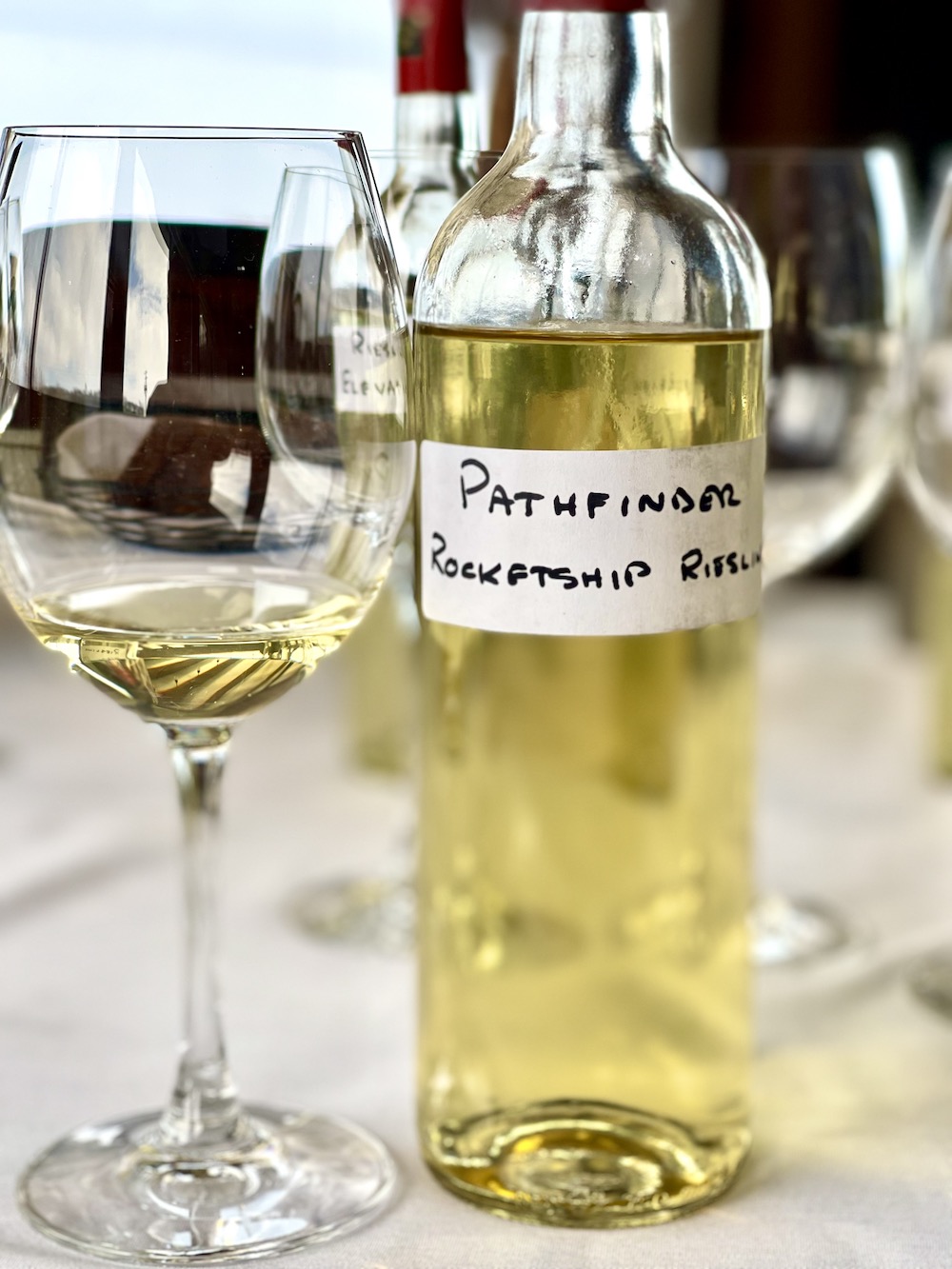
On Oct. 14, Schmidt and his winemaking team inoculated 600 liters of the famed St. Urban Vineyard Riesling with the newly named “space yeast” for about two weeks. “I monitored it every day; there was no activity,” said Schmidt. “I thought the yeast was dead. I killed yeast that was born three kilometres underground. Happily, around the end of the second week I began to see life; small bubbles were forming, and fermentation began, albeit slowly, very slowly.”
It was Schmidt’s intent to ferment the space wine to dryness, primarily to see if the yeast could maintain fermentation and remain viable in a wine above 10% abv.
“It took about two and half months, but around Christmas it finally finished fermentation. We will bottle this wine in the coming months and follow its aging trajectory and taste it beside a control batch of Riesling.”
To keep the space theme going, inside the 600 L tank, the fermenting grapes were wrapped in a space blanket, held together by space tape and heated by a space heater. There’s a lot of space stuff going on here with this experiment.
Lucky for all of you reading this, I was presented a taste of this rare Pathfinder Rocketship Riesling in advance of it being labelled, with Schmidt and Cabernet Franc aficionado Allison Slute (@cabfrancchronicles) while munching on some very fine food in the estate’s first-class dining room overlooking the snow covered vineyards.
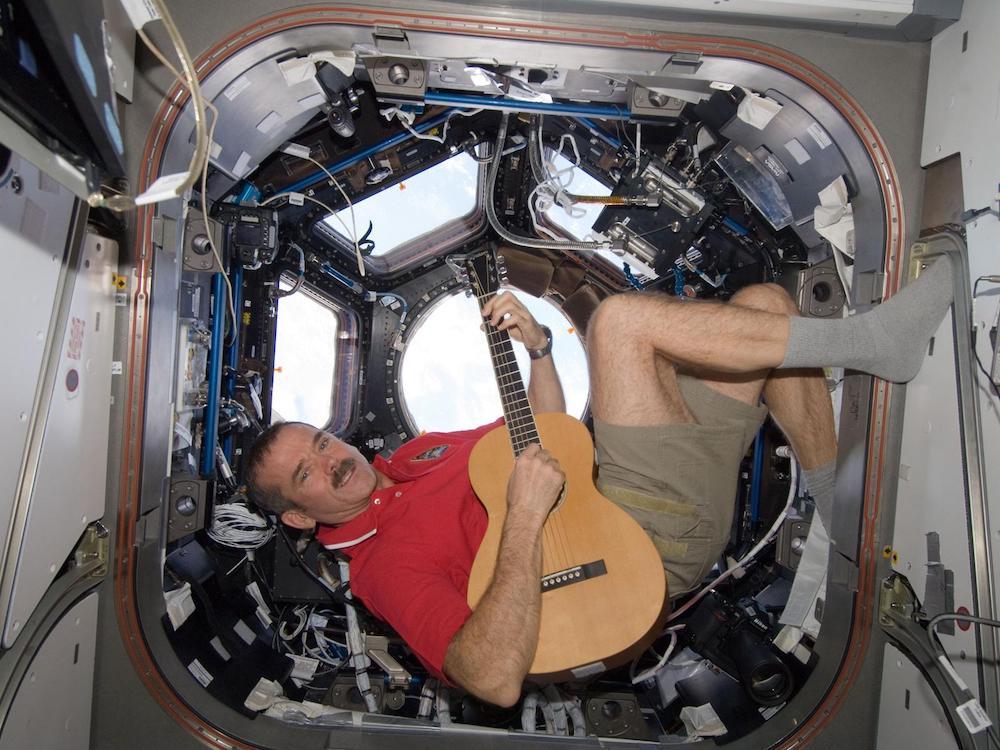
Does drinking the Rocketship wine make you feel buoyant and have the urge to strum a guitar upside down in deep space like Canadian Space Agency astronaut Chris Hadfield is doing in this photo above on the International Space Station? Likely not … unless pounding back a couple of bottles gives you that lighter-than-air feeling. Will it cost you $1 million a bottle like the famed Bordeaux Petrus 2000 — that was aged for a year while orbiting Earth — was selling for at auction? Hardly. But you can buy 40,000 bottles of Rocketship for the same price. Are there sensory attributes to be ascertained from the space wine? Well, the jury is still out on that. Schmidt and the winemaking team will monitor and compare the space wine with the more traditionally made St. Urban Riesling over time. At the very least, it’s a pretty cool story with a wine you can actually buy to go with it.
In this post, we taste the Rocketship Riesling, compare it to the “regular” St. Urban Riesling and a few other upcoming wines (and by that, I mean, a whole bunch of Cabernet Francs; did I mention Allison Slute was visiting at the same time I was there?) that got our full attention. Also, a tour and tasting of Schmidt’s new experimental barrel/tank cellar where a plethora of cutting-edge projects are percolating away.
Here’s what I liked:
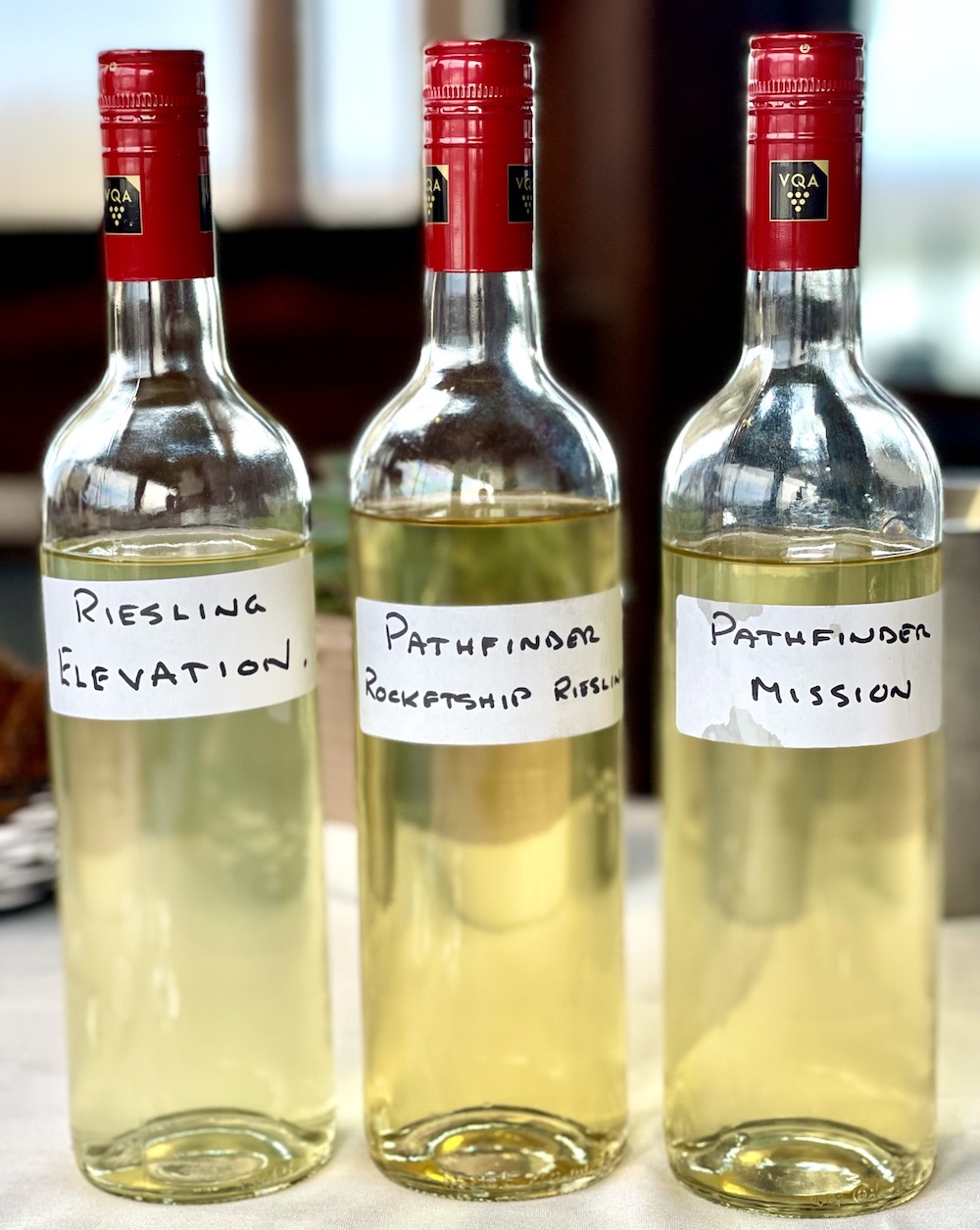
Vineland Estates Elevation Riesling 2022 ($24, not bottled, or available quite yet, tentative 92-93 points) — The historic St. Urban Vineyard was planted in 1979 and has consistently made some of most minerally and distinct Rieslings in Ontario. Schmidt want to use St. Urban Vineyard Field D for both this wine and the Rocketship reviewed below. The Elevation Riesling is now the top seller at Twenty Mile Bench, surpassing only recently the Semi-Dry Riesling. For comparison’s sake, the Elevation Riesling is finished with 28 g/l of RS compared to under 3 g/l (pretty much perfectly dry) for the Rocketship. This follows closely to previous versions with a pretty and profound nose of fresh-squeezed lime, wet stones and saline minerality, green apple, white flowers, and pear. There is sweet-tart tension on the palate and a melange of lime/citrus, ripe pear, a hint of honey, subtle peach notes, stony minerality and electric acidity driving the back end. These Elevation Rieslings have a sound history of aging beautifully for 10 years plus. Great value from a top-notch Niagara Riesling from the Twenty Mile Bench.
Vineland Estates Pathfinder Rocketship Riesling 2022 ($25 range, not bottled yet, 92-93 points) — As explained in detail in the intro, this one-of-a-kind Riesling, made from the same vineyard and block as the St. Urban above, is an experimental wine from a single yeast cell grown in the absence of the sun’s radiation and raised in zero gravity on board a rocket ship (I can’t believe I just wrote that!). How cool is that!! What makes it difficult to compare with the wine above is the fact that the space wine yeast took nearly three months to ferment, while the St. Urban was fast and easy. Also, Schmidt wanted to ferment the Rocketship wine to complete dryness, which added time to the project. The result is a much deeper shade of gold in the glass and radically different attributes in the glass. Are the differences because of yeast? Or is it the long fermentation? Very hard to ascertain and hopefully the scientists will enough data from Schmidt to make a call on that. For you and me, it’s a chance to buy these two bottles together and make our own conclusions. The nose is much more minerally driven with notes of white flowers, lemon oil, crisp apple, peach, and lime cordial. On the palate it is rich, ripe, and layered with fleshy peach, apricot and lime/citrus with stony minerality and a zesty, lifted finish. An interesting comparison and I would love to see how they both age in the bottle. I can’t wait to get my hands on a bottle or two when it’s released to the public.
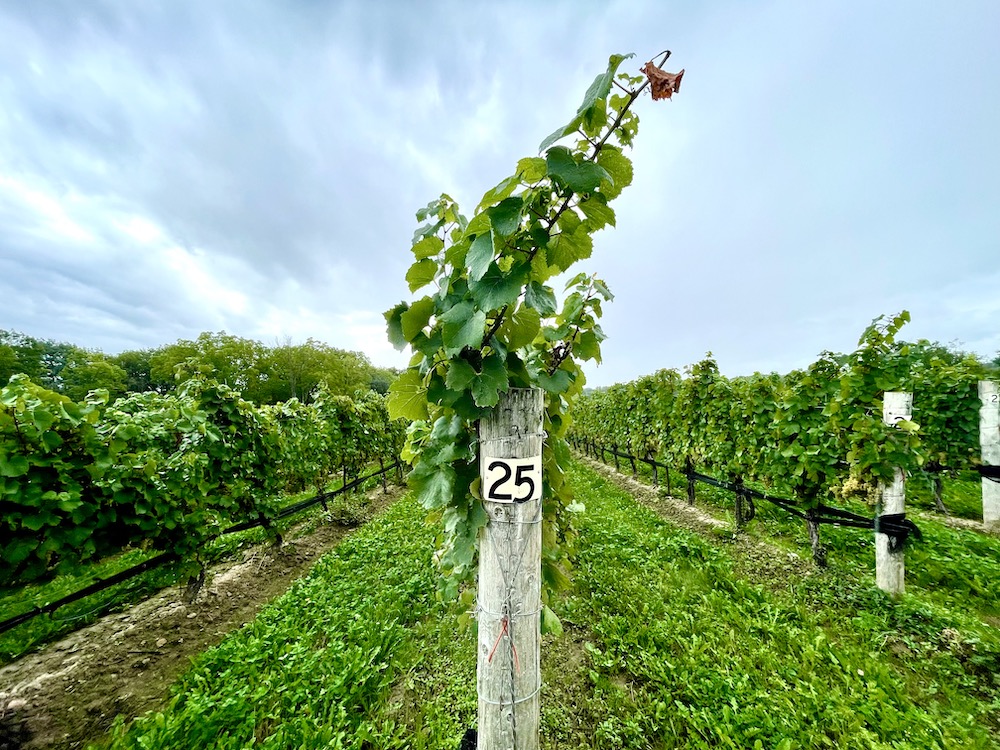
Vineland Estates Pathfinder Mission Vineyard Chardonnay Musque 2022 ($25 range, not bottled yet, 91-92 points) — Pathfinder is a new series of wines from Vineland Estates that focuses on unique projects from micro lots. The Mission Vineyard, above, is Schmidt’s own vineyard located not far away, just north of the Tawse home vineyard on the Twenty Mile Bench. The Chard/Musque is fermented on its own lees after 12 hours of skin contact. It’s highly aromatic with generous notes of ripe peach, chalky minerality, Bosc pear, citrus and a lovely floral note. It’s ripe and rounded with a creamy texture, layers of orchard fruits, chalky minerality and tingly, fresh acidity keeping everything in harmony on the finish. A Chardonnay Musque that takes a different, better in my opinion, path to bottle.
Here comes the Cab Francs!
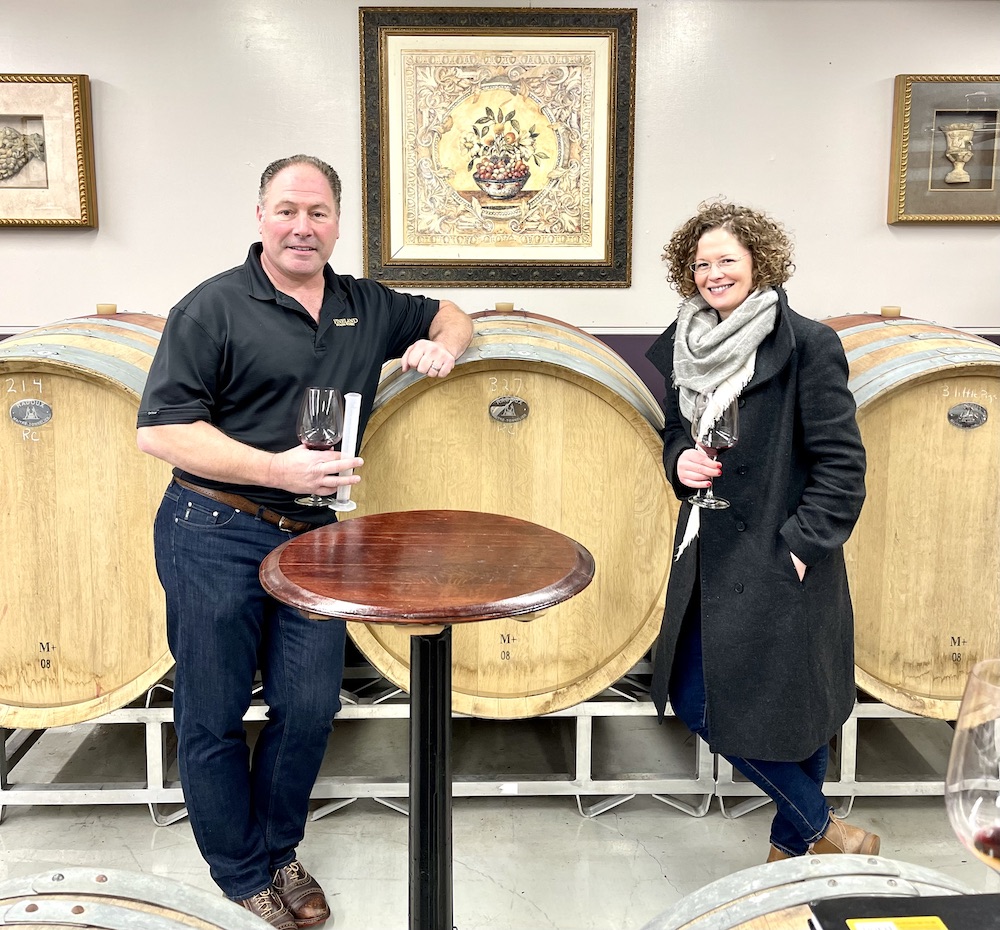
Just to be clear here, I have come to appreciate Cabernet Franc a great deal over the years, especially the finest examples made in the warmer vintages of Niagara. It wasn’t always thus; so many Cab Francs to my taste buds just didn’t make the grade. But to be caught between Schmidt and Slute (above), both their DNA is 95% Cab Franc, at a tasting of Cabernet Francs is to get a lesson in humility. These two are crazy/nuts for what they believe is the BEST GRAPE EVER and can talk incessantly (yes, incessantly) about every single nuance of every single sniff and taste. Why was I even there? They didn’t even see me! Hello, I’m over here?!?!
They both know so much about this grape that simply tasting two Cab Francs made with different clones sets off a clonal discussion that would rival a Supreme Court debate on the Constitution.
As we later moved into the estate’s new “micro expressions cellar,” where the really innovative things to do with (mainly) Cabernet Franc occur, I soon realized that this is THEIR Disneyland, THEIR happy place and the rest of us are just pilons standing in THEIR way. But I digress … back to regularly scheduled programing.
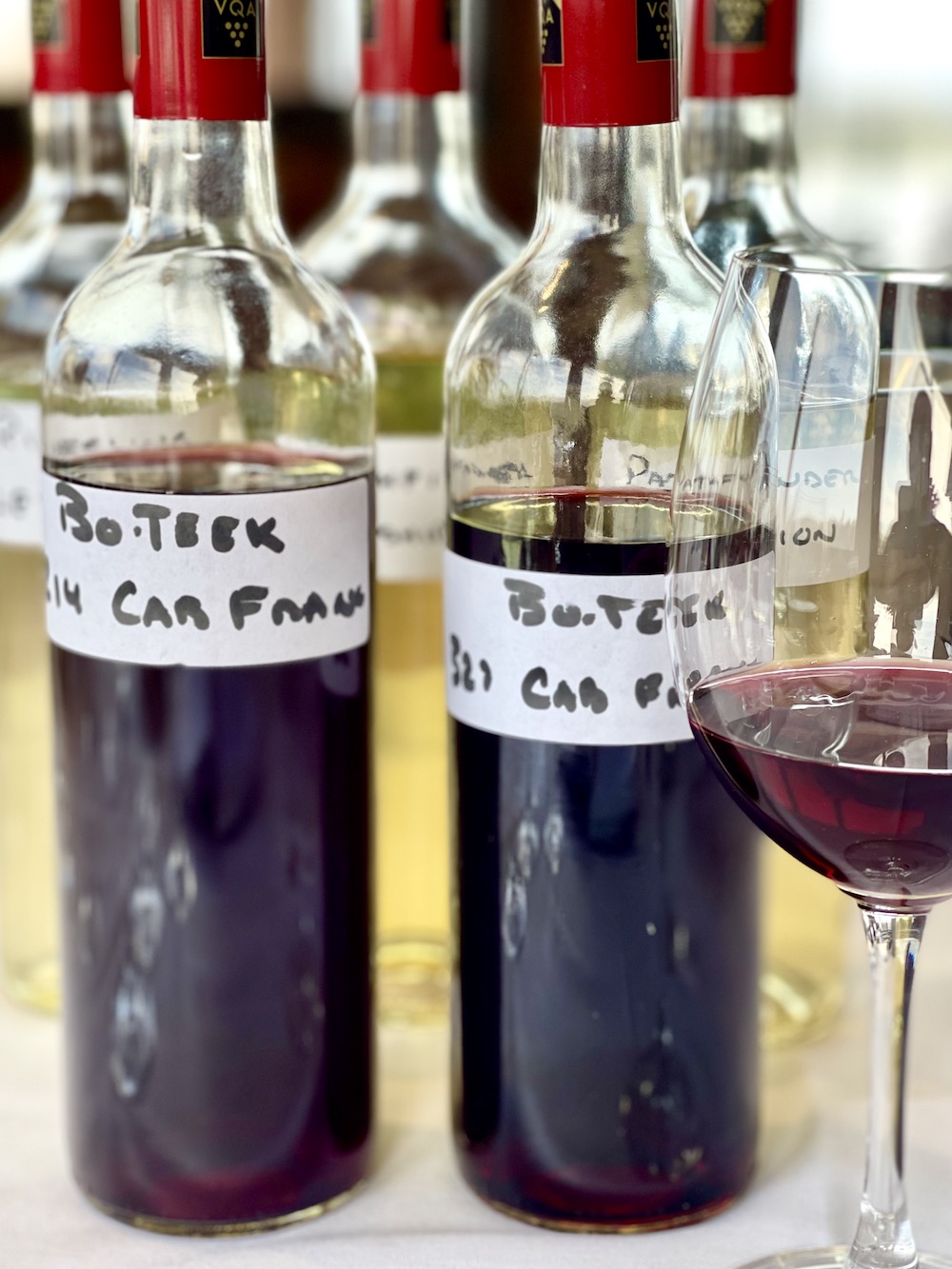
Vineland Estates Bo-Teek Vineyard Clone 214 Cabernet Franc 2021 ($35, not yet bottled, 91-92 points) — I have tasted these two clonal expressions a few times now and can say that the Clone 214 is a more muscular expression than the 327, in my opinion. I have no reason why that would be, but my notes point to it. I know Schmidt and Slute have numerous reasons for the differences, but I could barely understand a word they were saying, so just accept my gut feelings as fact (dammit), that this is a tad more rustic and firmer compared to the below review. The nose shows brambly raspberry bush, dark cherries, herbs, anise, earthy/savoury notes, and toasted spices from 16 months in all neutral oak barrels. It has lovely savouriness on the palate with juicy red berries, earthy notes, mulled herbs, integrated spice notes, smooth tannic structure and a tangy, lifted finish. Good aging potential here, say 7+ years. It paired perfectly with the Perth County pork belly, below.
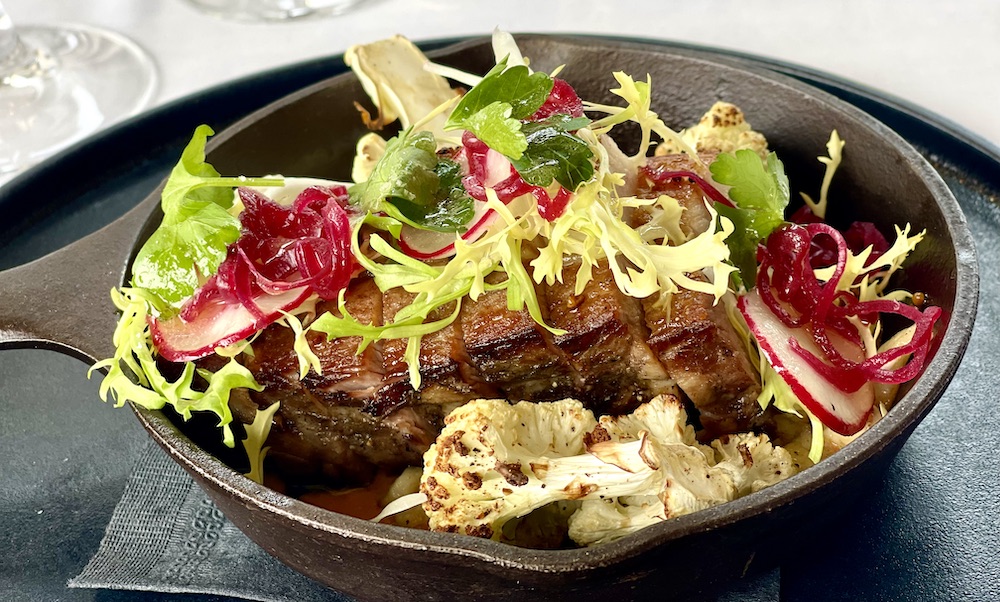
Vineland Estates Bo-Teek Vineyard Clone 327 2021 ($35, not bottled yet, 92-93 points) — The 327 is more elegant on the nose with richer, deeper layers of red berries, anise, peppery notes, roasted herbs, a bit finer oak spice and underpinned with charred cedar. It takes a turn to darker berries on the palate with anise/licorice notes, herbs, firmer tannins, fine oak spice, and electric acidity keeping it fresh and lifted through a long finish. Can age 7+ years.
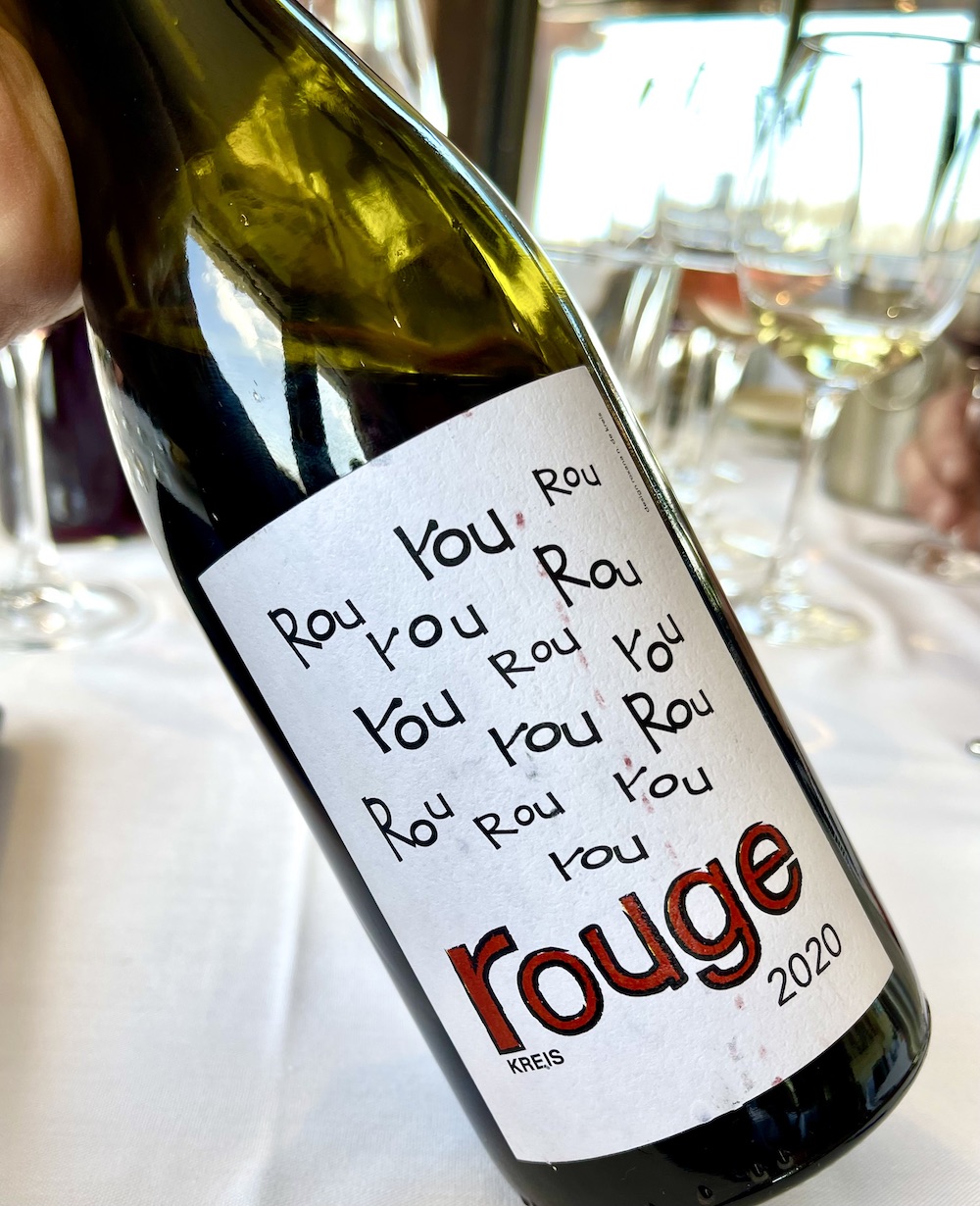
At lunch, after tasting through the Rieslings, Chardonnay Musque and Bo-Teek Cabernet Francs, Slute brought a bottle for Schmidt to taste (and graciously acknowledged my presence and included me). It was served blind, and it really tasted like a stripped down, raw Cabernet Franc from a cooler Niagara vintage. Of course, why would Slute, with access to every CF made on the planet, bring a Niagara wine for us to taste blind. Right, it wasn’t Niagara it was an unattainable to mere mortals Bernd Kreis Rou Rou Rouge 2020 from Württemberg, Germany. I wasn’t even aware Germany made Cabernet Franc! It was a fun and interesting take on this grape with a touch of reduction, but interesting dark berries, underbrush, herbs, and swirling mineral notes. It was a satisfying quaffer and not too acidic, or herbaceous, on the finish. Thank you, Allison, for the taste.
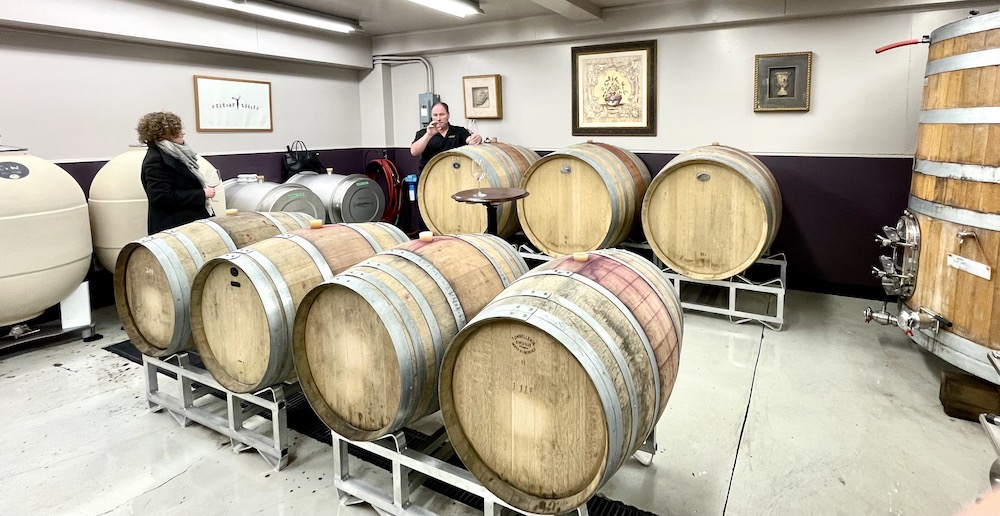
We finished the tasting with a tour and tasting in the new “micro expressions cellar.” Described as a place to practise “the art of the possible,” it’s a finishing room with varying sizes of oak barrels, tanks and more clonal expressions hiding away in various vessels, including the new ceramic Clayver eggs.
It’s also a new home for the most ambitious project yet at Vineland Estates — The Legacy Infinity project, now going into its third bottled iteration.
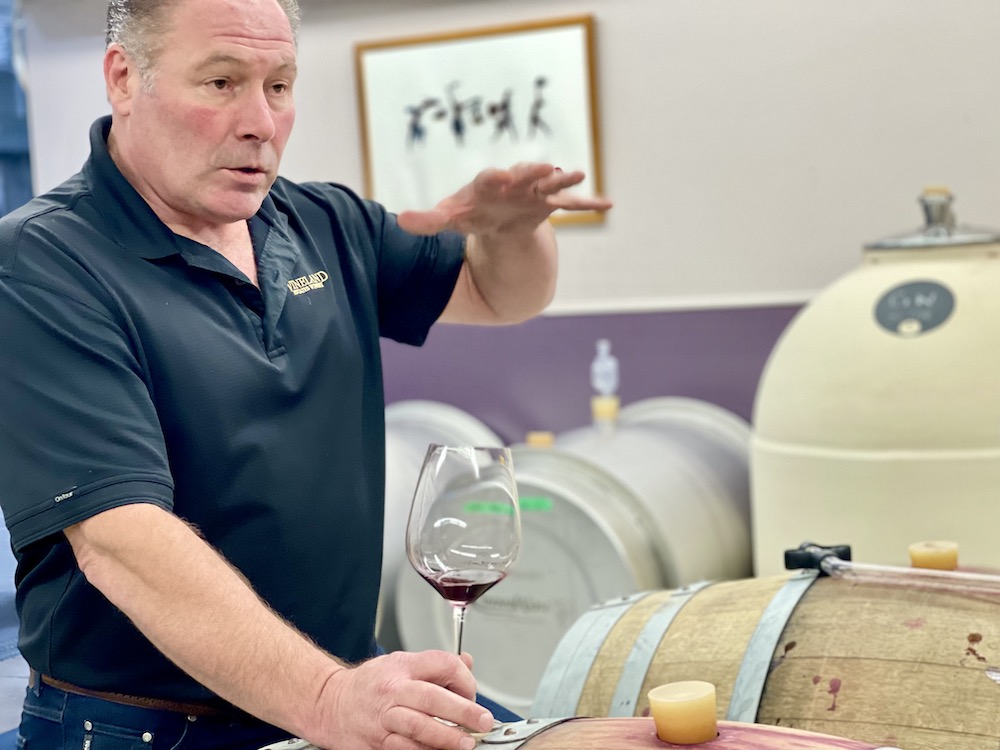
The Legacy is made from an infinite blend of Cabernet Franc spanning 12 vintages sourced from a block of vines cropped to one tonne per acre. 600 litres is added to the blend every year and 600 litres is removed for bottling. It’s a fascinating expression of a single vineyard wine and likely the most honest expression of terroir there is because it is laser focused one tiny block of a vineyard and a culmination of vintages. The multi-vintage aspect eliminates vintage variation from the equation and focuses entirely on a single-vineyard variety. The wine is fairly consistent from vintage to vintage.
It’s a trend that’s gaining traction in Niagara after VQA recently approved a category for non-vintage wines, and one that can reach the highest echelons of quality when this much work goes into it.





Comment here